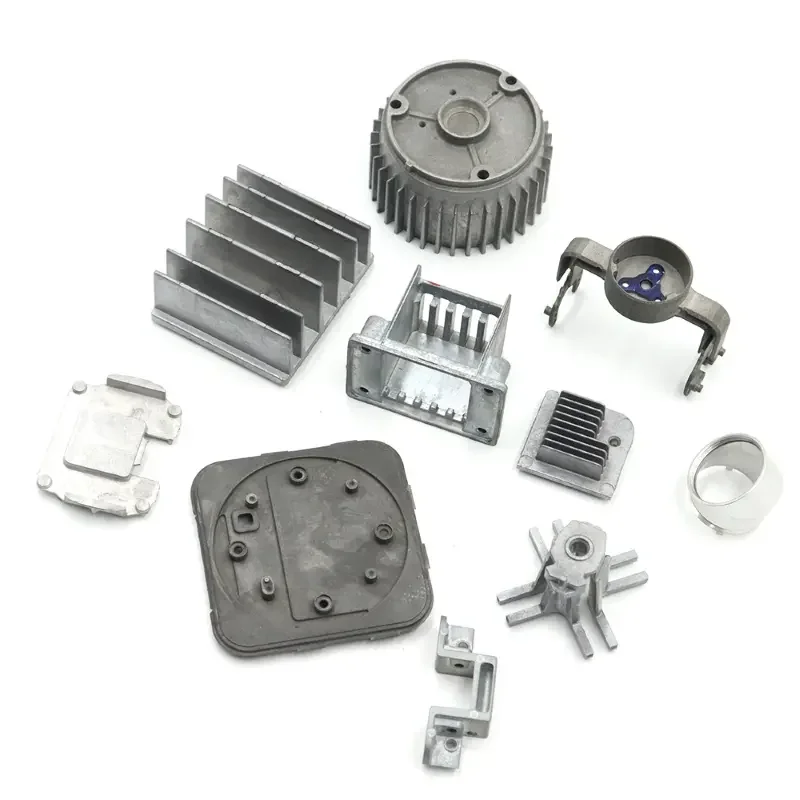- This topic is empty.
-
AuthorPosts
-
29/04/2025 at 16:15 #4705
In the rapidly evolving manufacturing sector, choosing a high precision casting machining factory is a strategic decision that can significantly impact the quality, performance, and longevity of your components or final products. High precision casting – also known as investment casting or lost-wax casting – combined with CNC machining or other finishing processes, enables the production of complex, high-tolerance parts for industries such as medical, automotive, energy, and industrial machinery. In this blog post, as a professional machining parts manufacturing company, Vibo will share how to choose high precision casting machining factory.
1. Understand Your Project Requirements
Before beginning your search for a factory, clearly define the specifications of your casting project:
– Material Specifications: Know what type of alloys are required (e.g., stainless steel, carbon steel, aluminum, titanium, cobalt-based alloys, etc.). Each factory may specialize in specific metals.
– Tolerance Levels: Determine the dimensional accuracy you require. High precision generally means tolerances as tight as ±0.005 inches (±0.127 mm) or better.
– Surface Finish Requirements: Certain industries require mirror-finished or ultra-smooth surfaces (e.g., Ra 1.6 μm or better), which depends on both casting and post-machining capabilities.
– Part Complexity and Geometry: Complex geometries may require specialized tooling, advanced simulation software, or 5-axis machining centers for finishing.
– Batch Size: Whether you need prototype quantities, small batches, or high-volume production will influence which factories can accommodate your demand economically.
Having this data upfront ensures your potential partners are technically equipped to deliver.
2. Evaluate Technical Capabilities
A high precision casting machining factory must demonstrate excellence in both casting and machining operations. Here' s what to look for:
a) Casting Expertise
– Casting Methodology: Verify if the factory uses advanced techniques like investment casting, vacuum casting, or ceramic shell casting.
– Simulation Software: Use of casting simulation software (e.g., MAGMASOFT, ProCAST) indicates a proactive approach to defect prevention, mold design optimization, and process efficiency.
– Quality of Mold Fabrication: Mold quality determines casting precision. Look for CNC-based wax pattern tooling or 3D printing for high-accuracy molds.
b) Machining Capabilities
– CNC Equipment Inventory: Factories equipped with multi-axis CNC machines (3-axis to 5-axis) can achieve higher accuracy and accommodate more complex geometries.
– Inspection Tools: Coordinate Measuring Machines (CMM), laser scanners, and optical comparators are essential for validating tight tolerances.
– CAD/CAM Integration: The ability to seamlessly integrate CAD models into CAM software like Mastercam or SolidCAM ensures consistent machining quality and optimization.
3. Quality Assurance Standards
Precision casting machining demands a rigorous QA/QC process. Look for factories certified to:
– ISO 9001: General quality management standard.
– ISO 13485: For medical device components.
– AS9100: For aerospace applications.
– IATF 16949: For automotive production.
Beyond certifications, assess their internal QA procedures:
– Incoming Material Inspection: Ensures only certified materials are used.
– In-process Inspection: Continuous monitoring during casting and machining stages.
– Non-Destructive Testing (NDT): Techniques like ultrasonic, dye penetrant, radiographic, or magnetic particle testing are often used to detect internal flaws.
– Final Dimensional Reports: Look for PPAP, FAI (First Article Inspection), and SPC documentation if your industry requires it.

4. Manufacturing Process Control
Consistency is critical in high precision manufacturing. Evaluate the following:
– Process Documentation: Factories should have documented SOPs (Standard Operating Procedures) for each stage.
– Traceability: The ability to trace raw materials, production processes, and operators involved in the part lifecycle is crucial for regulated industries.
– Automation & Robotics: Modern facilities often use robotics for deburring, finishing, or even real-time process monitoring to minimize human error.
5. Lead Time and Scalability
Time-to-market is a crucial factor. Evaluate the factory' s production planning and scalability:
– Tooling Lead Time: Can they quickly produce new molds or adapt existing ones?
– Machining Turnaround: How fast can they finish and deliver machined parts?
– Flexible Capacity: Can they scale from prototyping to mass production without quality degradation?
– Logistics Capabilities: Efficient shipping channels, customs handling (for international clients), and packaging standards.
6. Cost Structure and Transparency
A precision machining partner should offer not just competitive pricing, but also pricing transparency. Understand the cost breakdown:
– Tooling Costs: One-time setup or mold charges.
– Per-piece Pricing: Varies by batch size, material, and complexity.
– Secondary Operations: Heat treatment, surface coatings (anodizing, powder coating), and post-machining inspection.
– Hidden Costs: Delays, rework, or inadequate QA may add costs later. Choose a factory that prioritizes doing it right the first time.
Request detailed quotes, and conduct a total cost analysis – including logistics and failure risk – not just unit pricing.
7. Experience and Industry References
Factories with years of experience in specific industries often understand nuanced requirements that others may overlook.
– Client Portfolio: Look for case studies or references from clients in your domain.
– Application-Specific Expertise: Medical, aerospace, or automotive components often require specific design and compliance knowledge.
– Past Projects: Ask for examples of parts manufactured with similar complexity, material, and volume.
8. On-Site Audit or Virtual Tour
If feasible, visit the factory or request a virtual tour:
– Observe Cleanliness and Organization: A well-maintained plant reflects process discipline.
– Meet Engineering Staff: Discuss your requirements directly with the technical team.
– Audit Documentation: Review QA records, training logs, and calibration certificates.
Even a virtual audit can reveal much about a facility's professionalism, attention to detail, and transparency.
9. Communication and Technical Support
The best factories don' t just manufacture – they collaborate. Evaluate their communication capabilities:
– Response Time: How quickly do they respond to RFQs and technical queries?
– Design for Manufacturability (DFM) Support: Can they suggest design changes to improve casting or machining feasibility?
– After-Sales Support: How do they handle complaints, replacement, or warranty issues?
Effective communication reduces the risk of misunderstandings and accelerates development cycles.
10. Digital Integration and Documentation
Digitally integrated factories provide superior traceability and coordination:
– ERP/MES Integration: Indicates digital control over scheduling, resources, and output.
– Digital Twin or 3D Model Verification: Some factories use digital twin technology to simulate machining processes and avoid scrap.
– Document Control Systems: Ensures your specifications, revisions, and approvals are version-controlled.
Conclusion
Choosing the right high precision casting machining factory is a blend of technical evaluation, strategic alignment, and trust. From tooling capabilities to QA protocols, from communication fluency to documentation rigor – every aspect contributes to a successful long-term manufacturing partnership. By following a structured evaluation process, you can ensure that the selected factory not only meets your current needs but also scales with your future ambitions.
-
AuthorPosts
- You must be logged in to reply to this topic.


